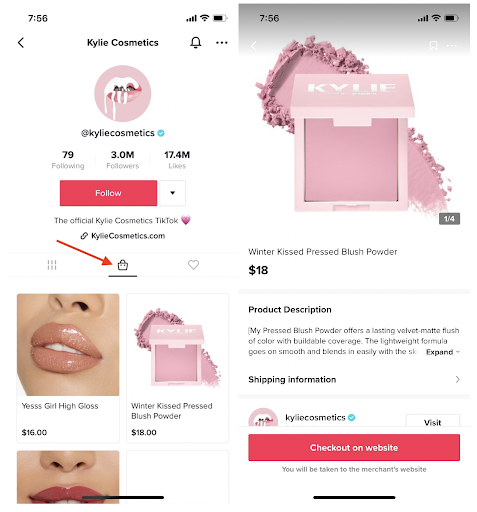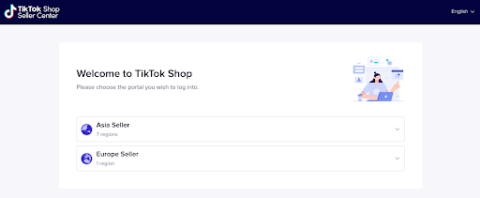Without question, TikTok was the #1 most downloaded social media app in Q1 of 2022.
The platform already has over 1 billion active users, and though it started out as a music-focused app that encouraged people to sing along to their favorite songs, there is now a wide variety of content featuring more original videos from users.
In 2022, it’s becoming a major trend for brands to show their personality and engage with the members of their communities through video specifically.
Social media apps, such as TikTok allow brands to interact more with their customers, which increases brand awareness, as well as customer loyalty.
So the question is easy: Why wouldn’t TikTok shopping be next?
But First: The TikTok Phenomenon
TikTok is like an updated version of the extinct social media app “Vine,” which was taken off the app store in 2016.
Vine allowed users to post videos of up to seven seconds, and the content was similar to some of the videos posted on TikTok today.
According to multiple studies, millennials have an attention span of around 12 seconds, and Gen Z’s is about 8 seconds, so the short video clip phenomenon made sense.
The tech company ByteDance saw a window of opportunity and capitalized on it, creating TikTok.
When you open the app, the first thing you are directed to is a “For You” page, which promotes videos that are most likely to match your interests and catch your attention.
Other social media apps such as Instagram and Facebook, by contrast, fill your feed with posts mainly from the people and brands you’re following.
TikTok’s algorithm is designed to keep the user engaged with new posts from strangers that might pique their interest and keep them scrolling.
The “For You” page might be TikTok’s most successful feature on the app because it generates content every second that is dedicated to each user’s individual interests, so you can see how this success leads to the next phase of the social platform: TikTok shopping.
What Is TikTok Shopping?
Tik Tok shopping is an easy way for users to purchase the products they see on TikTok without ever having to leave the app (very similar to Instagram Shopping, which you can learn more about here).
TikTok makes it easier for retailers in the ecommerce industry by promoting products and services consumers can purchase right on their platform.
Taking advantage of the products already being promoted on TikTok by influencers, and eliminating the step of going to the website where the product is offered, is where TikTok shopping comes in handy.
Many brands are using influencers in their marketing campaigns on TikTok by sending their products to people with a lot of followers and asking them to promote their products.
Sometimes, reviews are voluntary and honest, but most of the time, the influencers are getting paid and will promote positive feedback on whatever the company wants them to promote.
How consumers purchase products is simple:
- First, they see a product they want and then find the brand’s TikTok page (or see some while strolling the app!). Businesses promoting products on TikTok will have a dedicated shopping tab directly on their profile.
- The customer can then browse through the variety of products offered by the company and pick out the exact product they want.
- When they are done shopping, TikTok allows users to purchase the items directly on the app, or it will automatically redirect you to the company’s website for checkout.
Below is an example from one of the first brands to implement TikTok shopping, Kylie Cosmetics, that shows both the link to the TikTok shop and then what happens when you click on the link.
Again, the interface is similar to Instagram, making this an easy transition for brands to tap into a new audience, as well as consumers who use both platforms:
 Screenshot from TikTok, June 2022
Screenshot from TikTok, June 2022
How To Setup Your Own TikTok Shopping Experience
If you’re in the U.S. and you’re reading this, it’s probably because you haven’t been able to find anywhere that explains how to get started.
That’s because TikTok shopping isn’t officially rolled out in the U.S. just yet (Kylie Cosmetics was, unsurprisingly, part of a trial).
While some sources out there may say this feature is open to all in the U.S., the truth is that it is rolling out in the next few months.
Check back here for an update when the time comes, and we’ll walk you through the setup process!
At this time, when you Google “TikTok Seller Central,” you’ll be taken to this page where you’ll see the seven regions in Asia and the one region in the U.K. that have access to TikTok shopping.
 Screenshot from TikTok, June 2022
Screenshot from TikTok, June 2022
TikTok Shopping Best Practices
In the meantime, start paying attention to the accounts and brands you follow – the larger brands will likely get their shops up and running first.
Keep an eye on their videos and strategies, so you’re ready to roll when the time comes for your business.
Here’s what we recommend:
1. Post Authentic Content That Shows Your Sense Of Humor
Posting snippets of real people using your product and creating a montage will not only come off as more authentic but will encourage your customers to engage with your brand more.
2. Take Advantage Of Existing Trends And Audios
Whether it’s a popular dance or song that is trending around the world on TikTok, the brands that take advantage of getting involved in popular trends are the successful ones.
3. Collaborate With Influencers
Collaborating with other influencers will not only attract new customers to your brand but will increase overall brand awareness.
Fully 70% of teens trust influencers more than traditional celebrities, so when the influencers market your products, they really impact the purchasing decisions of their audience.
4. Give Users Full-screen Focus (Vertical Video)
TikTok’s software is programmed to fit vertical videos only, unlike other social media apps, such as Youtube and Twitter, where you can turn your phone sideways, and the content still fits on the screen.
Posting videos on TikTok that give users full-screen focus is crucial to maintaining a neat and professional image to the viewer.
More resources:
Featured Image: Lyubov Levitskaya/Shutterstock
